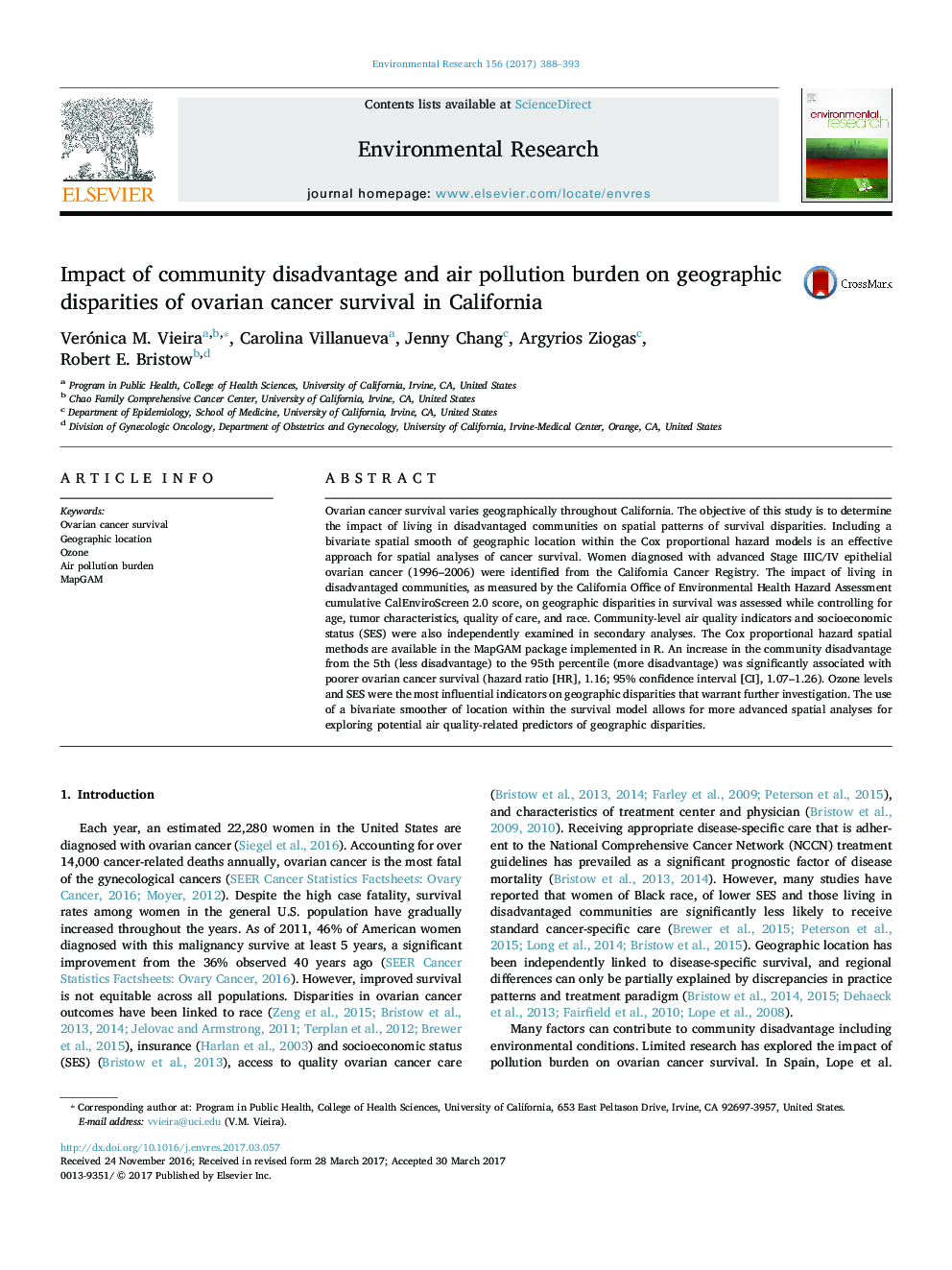| Article ID | Journal | Published Year | Pages | File Type |
|---|---|---|---|---|
| 5756466 | Environmental Research | 2017 | 6 Pages |
Abstract
Ovarian cancer survival varies geographically throughout California. The objective of this study is to determine the impact of living in disadvantaged communities on spatial patterns of survival disparities. Including a bivariate spatial smooth of geographic location within the Cox proportional hazard models is an effective approach for spatial analyses of cancer survival. Women diagnosed with advanced Stage IIIC/IV epithelial ovarian cancer (1996-2006) were identified from the California Cancer Registry. The impact of living in disadvantaged communities, as measured by the California Office of Environmental Health Hazard Assessment cumulative CalEnviroScreen 2.0 score, on geographic disparities in survival was assessed while controlling for age, tumor characteristics, quality of care, and race. Community-level air quality indicators and socioeconomic status (SES) were also independently examined in secondary analyses. The Cox proportional hazard spatial methods are available in the MapGAM package implemented in R. An increase in the community disadvantage from the 5th (less disadvantage) to the 95th percentile (more disadvantage) was significantly associated with poorer ovarian cancer survival (hazard ratio [HR], 1.16; 95% confidence interval [CI], 1.07-1.26). Ozone levels and SES were the most influential indicators on geographic disparities that warrant further investigation. The use of a bivariate smoother of location within the survival model allows for more advanced spatial analyses for exploring potential air quality-related predictors of geographic disparities.
Related Topics
Life Sciences
Environmental Science
Health, Toxicology and Mutagenesis
Authors
Verónica M. Vieira, Carolina Villanueva, Jenny Chang, Argyrios Ziogas, Robert E. Bristow,
